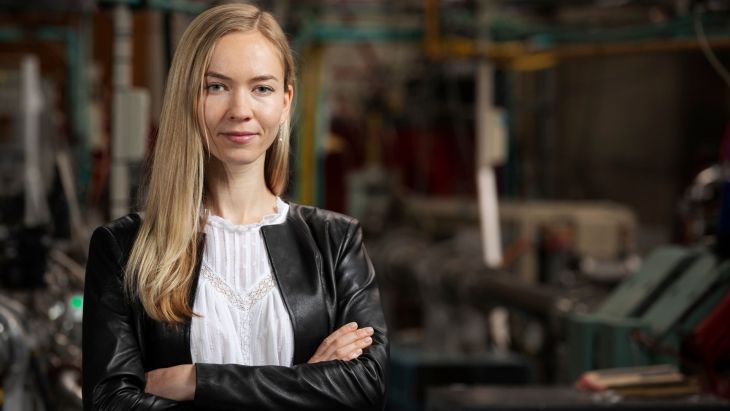Australia is set to play a leading role in the global hunt for mysterious dark matter, with the launch of a new lab in regional Victoria today.
The Stawell Underground Physics Laboratory (SUPL) will be the new epicentre of dark matter research in Australia and is a collaboration between the University of Melbourne, The Australian National University (ANU), ANSTO, Swinburne University of Technology and the University of Adelaide.
Located one kilometre underground in the Stawell Gold Mine, SUPL is the first dark matter laboratory in the Southern Hemisphere and will advance understanding of dark matter and unlock the secrets of our universe, including its origins.
Dark matter is a substance that doesn't absorb or emit light.
Lead researcher on the project, Professor Elisabetta Barberio from the University of Melbourne, said dark matter has been eluding scientists for decades.
"We know there is much more matter in the universe than we can see," said Professor Barberio.
"With the Stawell Underground Physics Laboratory, we have the tools and location to detect this dark matter.
"Proving the existence of dark matter will help us understand its nature and forever change how we see the Universe."
ANU researcher Dr Zuzana Slavkovska will play a leading role at SUPL.
"I am procuring crystals that will be the main part of the dark matter particle detector in SUPL," she said. "My team at ANU is also working on the development of methods for identifying radio-impurities in materials that will be used to build the dark matter detector. Even the smallest radioactivity has to be thoroughly assessed, because particles from radioactive decays might mimic dark matter particles.
"What excites me most about the lab is that I might be a part of a discovery that will change the understanding of the universe. We believe that about 85 per cent of the mass of the universe consists of this mysterious substance called dark matter. We know almost nothing about it."
Dr Slavkovska said the new lab could also help develop new technologies used on Earth.
"Look at all the inventions and technologies that we have created and discovered knowing only 15 per cent of the mass of the universe; now imagine how much potential there is knowing the rest," she said.
With stage one of SUPL now complete, the lab is ready to host the experiment known as SABRE South, to be installed over coming months and which aims to directly detect dark matter.
SABRE South will run in conjunction with the complementary SABRE experiment taking place in Laboratori Nazionali del Gran Sasso, Italy. These experiments are designed to detect WIMPs (Weakly Interacting Massive Particles), one of the likely forms for dark matter particles.
ANU Vice-Chancellor Professor Brian Schmidt said ANU was proud to partner with the University of Melbourne and other Australian universities and research organisations on the new lab.
"Australia is one of the world's leaders when it comes to astrophysical and space research," he said.
"This amazing new facility is another example of that and will see Australian researchers, including from ANU, provide deep insights into our universe and foundational laws of physics.
"Dark Matter remains elusive, and there are only a handful of labs across the globe capable of making meaningful investigations. Australia has just put itself on the map when it comes to this exciting field of science.
"I am pleased Australia has the confidence and capability to take this scientific leadership.
"I am excited by what mysteries it will help solve, and along the way, the work and technology that will bring more Earthly impacts here to Australia."
The Stawell laboratory will be managed by SUPL Ltd., which is co-owned by the University of Melbourne, ANSTO, ANU, Swinburne University of Technology and the University of Adelaide.
The Australian and Victorian governments each gave $5 million in funding for the building of SUPL, and this funding was boosted by the Australian Research Council awarding a $35 million grant for the development of a Centre of Excellence for Dark Matter Particle Physics.







